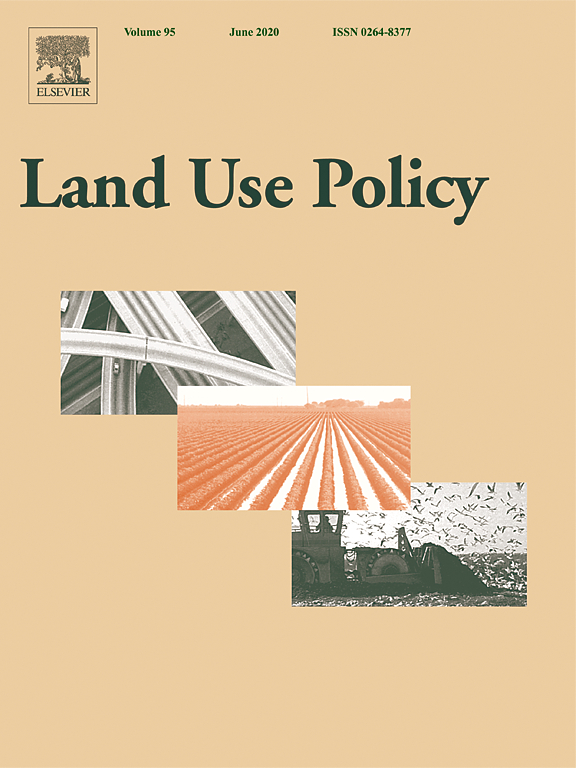Location
Land Use Policy is an international and interdisciplinary journal concerned with the social, economic, political, legal, physical and planning aspects of urban and rural land use. It provides a forum for the exchange of ideas and information from the diverse range of disciplines and interest groups which must be combined to formulate effective land use policies. The journal examines issues in geography, agriculture, forestry, irrigation, environmental conservation, housing, urban development and transport in both developed and developing countries through major refereed articles and shorter viewpoint pieces.
Land Use Policy aims to provide policy guidance to governments and planners and it is also a valuable teaching resource.
ISSN: 0264-8377
Members:
Resources
Displaying 41 - 45 of 279Registration of private interests in land in a community lands policy setting: An exploratory study in Meru district, Tanzania
Current Tanzanian land law offers registration of private interests in land in the form of Certificates of Customary Rights of Occupancy (CCROs) within a broader community lands approach. We conducted qualitative research on the issuance of CCROs along a mountain slope transect in Meru district in northeast Tanzania. This area features intensified smallholder agriculture that evolutionary theory suggests is well adapted for registration of private interests in land.
Lawless land in no man’s land: The undesignated public forests in the Brazilian Amazon
The Brazilian Amazon has 49.8 million hectares (Mha) of public forestlands not allocated by the federal or state governments to a specific tenure status: the so called undesignated public forests (UPF). Historically, these public forests have been vulnerable to land grabbers and land speculation. Here, we highlighted the imminent threat in UPF by quantifying their accumulated deforestation, all of which is illegal, for the period 1997–2018 and the potential illegal occupation.
Integrated landscape approaches in the tropics: A brief stock-take
Continued overexploitation of natural resources and the associated impacts of climate change threaten the sustainability and biodiversity of our global social-ecological systems. ‘Integrated landscape approaches’ are governance strategies that attempt to reconcile multiple and conflicting land-use claims to harmonize the needs of people and the environment and establish more sustainable and equitable multi-functional landscapes.
Cadastral data as a source for 3D indoor modelling
Despite the rapid development of indoor spatial data acquisition technology, there are currently no solutions that enable large-scale indoor spatial data acquisition due to several limiting factors that characterize the indoor space. This fact, together with the rapidly growing need for indoor models, is the main motivation for our research. The focus is on the study of the appropriateness of existing cadastral data for 3D indoor modelling.
Green infrastructure planning: Unveiling meaningful spaces through Foursquare users’ preferences
The design of efficient Green Infrastructure —GI— systems is a key issue to achieve sustainable development city planning goals in the twenty-first century. This study’s main contribution is the identification of potential GI elements to better align the environmental, social and economic perspectives in the GI design by including information about the use, activities, preferences and presence of people. To achieve this, user generated content from Location Based Social Network —LBSN— Foursquare is used as a complementary data source.



